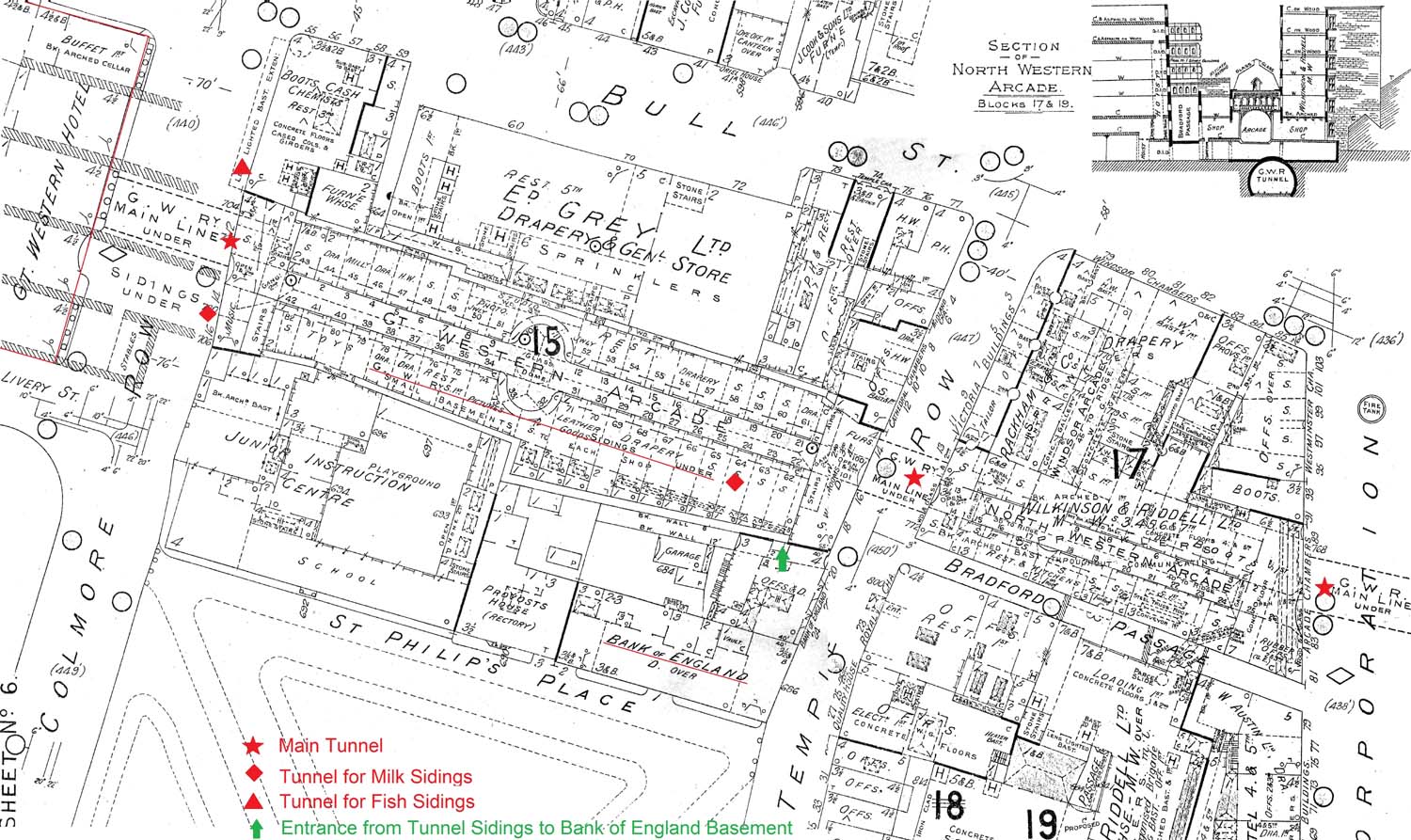|
|
 |
 |
|
GWR Route: Banbury to Wolverhampton
GWR Route: North Warwickshire Line
Birmingham Snow Hill - Structure: gwrbsh3827
 |
An annotated Fire Insurance map from the 1930s showing the
two shopping arcades (Great Western Arcade and North Western Arcade), which
were built over Great Western Railway's Snow Hill Tunnel. The tunnel is 596
yards long with an incline of 1 in 45 from Moor Street to Snow Hill Station.
The cross-section in the top right corner of the map shows Snow Hill Tunnel as
a wide conventional brick-lined tunnel under the basement level of the North
Western Arcade. This differed from the section under the Great Western Arcade,
where the broad gauge railway line had originally ran in a wide open cutting.
In 1873, to comply with the requirements of the Birmingham Extension Railway
Act of 1846, substantial brick piers supporting arches were constructed over
this open cutting to provide a roof. The land above was afterwards sold to Mr E
Simkin, who erected the Great Western Arcade directly above (see section in
gwrbsh1875). The Great Western Railway installed a
ventilation system to circulate air in the tunnel.
Under the Great Western Arcade the open cutting had been
wide enough for the creation of parallel tunnels for sidings on either side of
the main lines. The shorter of these, on the Up side contained a single track
siding designated the ‘Fish Siding’ with a second track, designated
the ‘Engine Spur’ being extended into the tunnel in 1913. On the Down
side, the tunnel was wide enough to accommodate a pair of tracks and extended
as far as Temple Row. These were designated the ‘Milk Sidings’. Near
the end of the tunnel for the Milk Sidings there was an entrance which gave
access at basement level to the rear of what was the Bank of England premise
(on the corner of Temple Row and St Philips Place). Derek Harrison mentions
this entrance as being bricked up in his book ‘Salute to Snow Hill’.
It is understood that this subterranean entrance was used to securely transfer
cash and bullion to the bank's vaults. In 1913, £124 was authorised to
install electric lighting in the Milk Sidings tunnel.
In 1867 there were one hundred and thirty horses stabled at
Snow Hill Station with most having stalls under the railway arches alongside
Livery Street, but in addition, leading off from Snow Hill Tunnel was a
blacksmiths shop and a stable with four stalls. These were for the shunting
horses which operated at the south end of the station.
Robert Ferris
 back back

|
|
|
